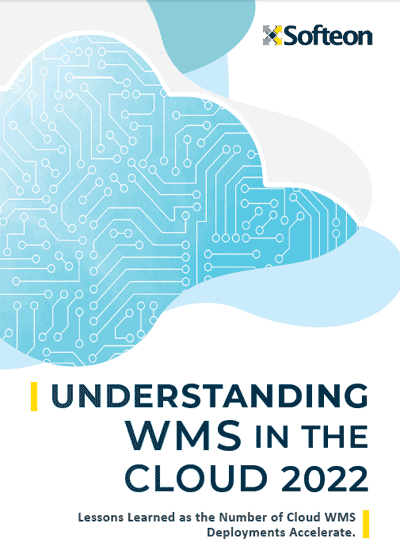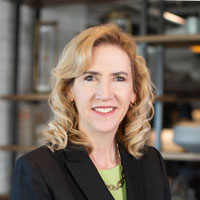Trip Report: CSCMP Edge 2022 Part 2
Many of you read my overall review and comment last week on CSCMP's annual Edge conference in Nashville. (See Trip Report: CSCMP Edge 2022).
I am back this week as promised with a summary view of the conferences three and a half keynote presentations (I will explain what I mean like that in just a moment), after first relating some addition internal CSCMP business at the conference I left off last week.
That would start with the "emerging leader" award, given to a recipient each year that is under age 32 who has done some good work in the supply chain. The winner this year was Andrii Aleksyeyev, Supply Chain Director of the Milk Alliance in Ukraine.
| GILMORE SAYS: |
WHAT DO YOU SAY?'
Tom Szaky of reverse logistics firm Terracyle caused I think all of us to rethink our perspectives on physical waste and its elimination in the supply chain.
Send us your
Feedback here
|
Not surprisingly, Aleksyeyev couldn't make it to Nashville to receive the award in person, but he gave a nice recorded video response that naturally enough focused on the challenges of supply chains during war time. And you think you have it tough.
Next, for many years shipper organization NASSTRAC sponsored a "Shipper of the Year" award. Then in 2018, CSCMP acquired NASSTRAC, and in 2021 NASSTRAC/CSCMP announced the honor would henceforth be named the Gail Rutkowski Transportation Excellence Award, after the long time logistics exec and director of NASSTRAC from 2014-2021.
This year's winner was not a shipper but a carrier named Mexpress, which in 2000, as a US company, gained approval to automatically clear Mexican customers, eliminating a major bottleneck. Somehow, they are the only ones allowed to do that still today.
I spoke with the founder - an Irishman with a Mexican business partner - later in the day, and he told a funny story of how the company got its name. That involved submitting a list of five potential names for approval of at least one by the Mexican government - names which couldn't duplicate any existing company name on a list they had no visibility to.
With that, the Monday opening day keynote, very well received, was from Mandy Rennehan, often termed "The Blue Collar CEO," who is the author of a book of the same name.
Rennehan grew up poor in Canada, but at 10 years old she was solving problems for her dad in his job running lobster traps and fishing lines, a shadowing of her future blue collar skills.
After hearing "but you're a girl" too many times in a man's contstruction world, Rennehan built in her 20s a successful company that does retail store refurbishments. She told a funny story of going into meeting with a roomful of execs at one major retailer as part of a vendor selection process, and somehow eliciting that almost all of them had worked at McDonald's or other low end jobs in their youth, making a connection with this somewhat stiff crowd. She won the deal.
In the end, Rennehan lobbied for greater respect for blue collar and trade jobs, noting how that lack of such workers has been real constraint on supply chains in the past two years - and that blue callar careers need a lot better "marketing."
I called it three and a half keynotes above because after Rennehan we got an all-female panel discussion on supply chain collaboration in the same main hall, keeping I would estimate about two-thirds of the opening session crowd after a 30 minute beverage break. The session was pproduced by the supply chain women's group AWESOME.
It was generally an interesting discussion, though most participants had a little bit of an angle. It was a wide ranging conversation, very difficult to summarize. A few highlights would include Kristi Montgomery, VP of innovation and R&D at 3PL Kenco Group, who noted "how data is shared [or not] is the critical factor" in 3PL-shipper collaboration.
She added that trust is the foundation of collaboration and is built through transparency. Montgomery also relayed the story of one client that wanted to track 100 KPIs - a "waste of time," she said. Focus on the metrics that really matter instead.
Sara Thomas, VP of inventory operations at Target, noted the internal collaboration between the Target's supply chain and store operations that led to use of sortation technology in its DCs to deliver pallets to stores that are in sequence of where SKUs are located, saving valuable store labor in a time of labor shortages in retail.
I am sure Target already was using lots of sortation before, so I am guessing this was more of a process change, but is a good example one group (distribution) absorbing a cost so another (stores) can reduce theirs. Why with thinking like that, we might even get factories to send advanced ship notices to their own company distribution centers one of the days.
The day 3 keynote (yes I am skipping for now day 2) was Jim Cafone, recently promoted to head of global supply chain for Pfizer, who was I must say surprisingly back from a keynote last year, with an update on the great story of how Pfizer got a COVID vaccine at massive scale to market in just 9 months, versus many years at lower scale historically for other vaccines.
After that success, Pfizer is now building its future state supply chain for vaccines, which is focused on agility, in what Pfizer expects will be an largely unpredictable environment
Why the repeat with Cafone? I am not sure, and as I noted last week he was a departure from the motivation-type speaker hired for the last day's session for many years running. I would have preferred someone new (either a supply chain or motivational type), but I spoke with several attendees literally on the way out the door who had not seen Cafone last year and thought he was very good here in 2022.
But the best of the keynoters by far was Tuesday's Tom Szaky of reverse logistics firm Terracyle, who caused I think all of us to rethink our perspectives on physical waste and its elimination in the supply chaion.
Szaky noted that in nature, there is virtually no waste - everything produced is used by some creature or process.
Not so with humans and our ways today - though we used to act a lot more like that until the 1950s in developed countries, during which consumerism moved to center stage and plastics of all kind permeated products and preferences.
By the way, Szaky defined physical waste as something you need to pay someone to take away - something of a parallel to the Lean perspective that process waste is activity the customer won't pay for.
Two keys point from Szaky: (1) the economics of waste elimination have to be right or it will never work, and here creativity can be key, and (2) the re-use of containers in the food and grocery sector is really gaining momentum.
There was a lot more thought provoking material on this - I may do a separate piece on it sometime soon.
OK, that's it for this week. I will be back one more time next weel with summaries of key breakout sessions.
Did you attend Edge 2022 or any of these keynotes? Let us know your thought at the Feedback section below.
|









